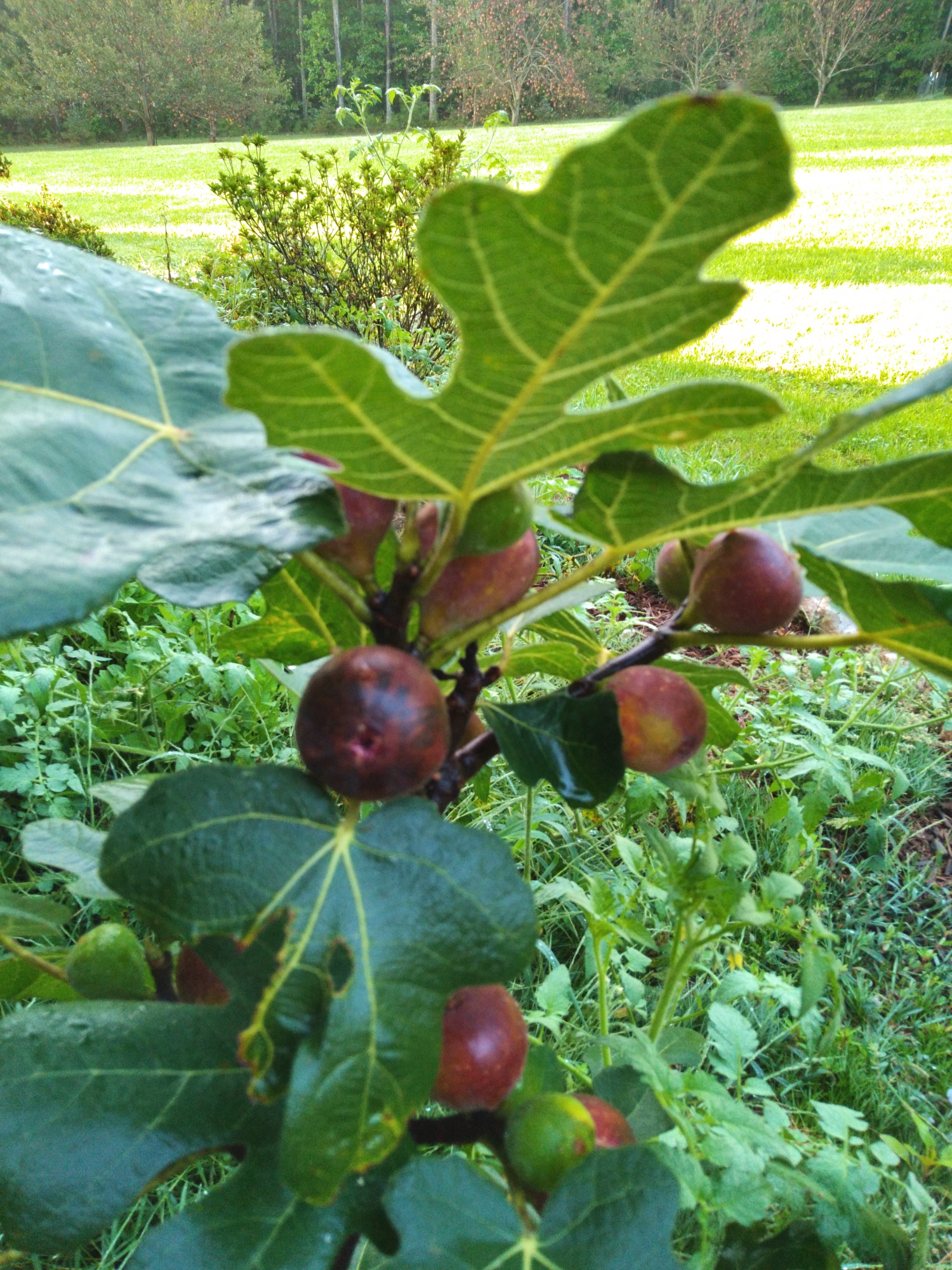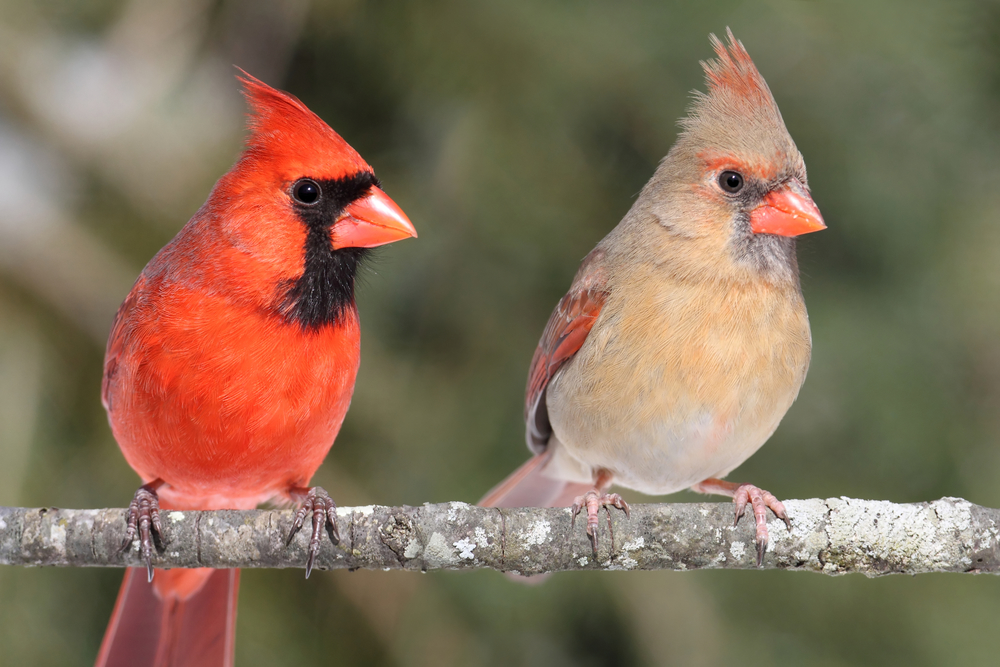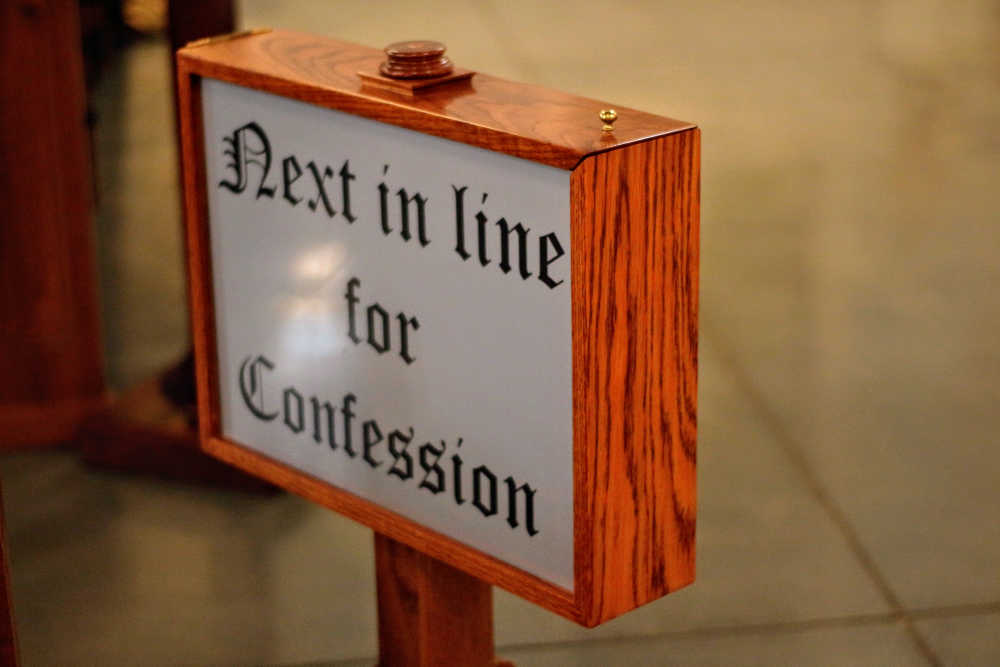
The Gift of Figs and Fig Trees
The first time I ate a fresh ripe fig, I was 28 years old and worked for a Manhattan financial service firm. One of my coworkers lived in Elmhurst, Queens, and he brought in fresh, ripe green figs, a variety called Italian Honey.
Thus began my lifelong fascination with this ancient, keystone fruit.

Fascination with Figs
If you know anything about Queens, you know it is land of the fig trees. Attached brick row houses fill block after block with identical postage-stamp-sized patches of lawn squared between concrete sidewalks and driveways. In the center of that postage-stamp-sized lawn grows a fig tree.
I remember driving to my grandmother’s house on a cold winter’s day and passing house after house with strange, mummy-wrapped trees capped with silver buckets standing on the front lawn. Each tree was shorn of its branches, then wrapped in layers of burlap or tarp with heavy ropes securing the tarp. An upturned bucket was placed over the top of the tree.
“What are they? And why are they wrapped?” I asked my father.
“Fig trees,” he said disdainfully. For a man who would baby chrysanthemums to bloom at a specific time each year to show and win prizes for their blossoms, he was highly critical of a tree that needed such coddling.
It took me many years to piece together why New York fig trees resembled blue Egyptian mummies each winter. The fig is native to warm, Mediterranean climates. Italian immigrants who moved to Queens in the early and mid-20thcentury planted the trees first in their gardens to symbolize fertility, riches, and sweetness.
I thought fig trees needed such coddling until recently. Then, I discovered that many people, like my father, disliked the work of wrapping the trees, unwrapping them, protecting them.
Instead, new varieties had been developed – namely, Chicago Hardy. It can take cold down to 10 degrees F, which is sufficient for most Virginia winters. I bought two plants from Baker Heirloom Seeds, and they sent me three. Delighted, I planted my three little trees in large pots. I planned to move them into the garage for their first several winters then plant them on my farm, perhaps in the orchard or near the house where their shade would delight us and their juicy sweetness nourish us.
The first year of their life on my farm, the little fig trees flourished. The trees spent the winter snug inside the garage. I hauled them back to their warm spot on the slates the following spring.
And then, a miracle happened.
By July, small green marble-sized fruit appeared on the branches. “How did this happen?” I marveled. “The tree didn’t flower!”
On a warm late August day, in the blink of an eye, the green marble-sized fruits swelled to teardrop shapes. Then, the first blush of purple, followed by a rush of rich, deep purple that encompassed the fruit from end to stem. Small green dots decorated the skin.
Gingerly, I pulled off a fig, washed it, and took a bite. Ah, the sweetness! And I had done nothing to deserve it. I had not fertilized my little figs, waiting until we found the right spot to plant them in the yard to fertilize them. Bees had not fertilized them, for I had seen no flowers. It was a miracle of riches I did not deserve, one that was seemingly a gift.
Chicago Hardy technically self-fertilizes with figs appearing on the new wood each year. Worldwide, figs are considered a keystone species, supporting wildlife in many ecosystems. They are indeed a miracle plant.

Fig Trees and Faith: Put Forth Good Fruit
This morning, I plucked figs from the tree and brought them inside to eat for breakfast. One felt very soft to the touch. Thinking it perfectly ripe, I bit into it to spit the entire mouthful of bitter, rotten fruit into the sink.
“And the Lord said to me, “What do you see, Jeremiah?” I said, “Figs, the good figs very good, and the bad figs very bad, so bad that they cannot be eaten.” Jeremiah 24:3 ESV
Figs, the good figs very good, and the bad figs very bad, so bad they cannot be eaten.
Jesus used the fig tree’s parable to help his disciplines understand they must put forth good fruit. Sometimes, Jesus seems to have great patience with unproductive fig trees, as in Luke 13 6-9 when the fig tree fails to produce fruit. Instead of cutting it down and burning it as the vineyard owner demands, the gardener begs for one more change. “Let me dress it with dung, and tend it, and give it another year.” Through the gardener’s careful nurturing, even this unproductive tree produces good fruit – notice to all of us that even the most wayward among us can bring forth good fruit if we tend them with love and ‘feed’ them with the truth.
But then we have the fig tree in Matthew 21:19-21:
And seeing a fig tree by the wayside, he went to it and found nothing on it but only leaves. And he said to it, “May no fruit ever come from you again!” And the fig tree withered at once.
What happened to this poor fig tree? It is by the wayside, so perhaps no gardener cared for it as in Luke when the gardener begged for another chance for the tree. But the Lord himself came to the tree, and when he found it, it produced no fruit. Neither good nor bad fruit – just nothing.
Like the fig tree, we are made to push forth sweet fruit from each year’s new growth. As we grow, we are expected to share the fruits of our growth with others to enhance the riches of God’s kingdom.
We are meant, like the fig tree, to produce abundant sweetness with the gifts God has given to us. And like the gardener in the parable, we are meant to nurture others along the way (although throwing dung at them, as appealing as the thought may be, isn’t an option.)
As I walk by my little fig trees, I smile. I haven’t done much with them yet, not even pruning them. Yet I am gifted by their sweetness and nourishment.
I sharpen my secateurs. Now is not the time to prune my little trees, for they continue to put forth ripe fruit. But soon, the leaves will turn bronze, then brown. Winter will be here. And it will be time to prune away the deadwood to encourage an abundant crop of figs next summer.
It will soon be time for me to prune away the old, bitter bits of me that no longer serve, and by pruning, allow new growth to flourish.

My latest novel, I See You, offers a thrilling ghost-haunted mystery. It’s the second book in The Majek Family Mysteries and getting rave reviews. Visit Amazon.com to purchase I See You in paperback or Kindle editions.



